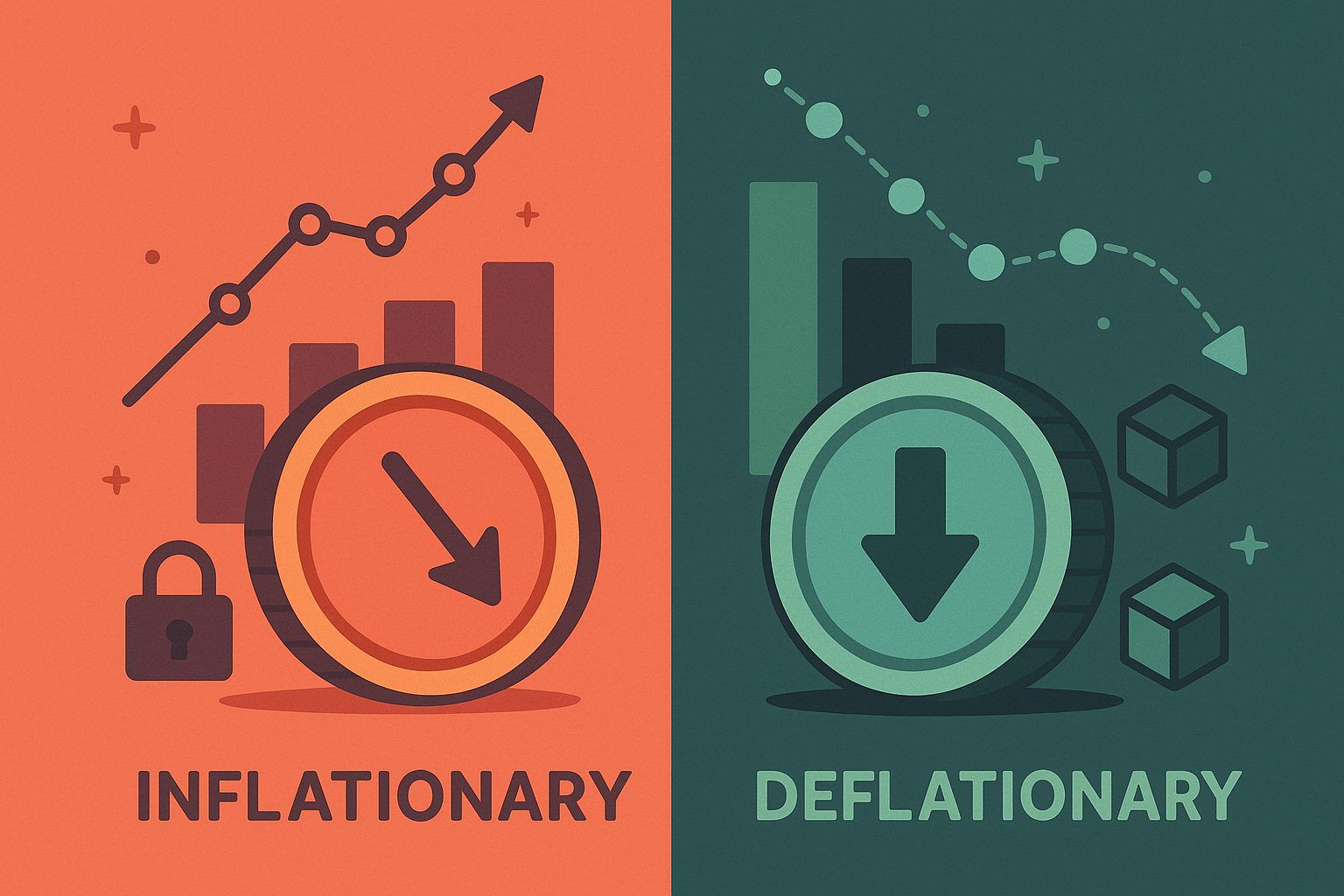Unveiling the Power of Bonding Curves in Token Economies
In decentralized finance and tokenized ecosystems, bonding curves have emerged as a foundational mechanism for automated market making and dynamic price discovery. At their core, bonding curves are mathematical functions that dictate how token prices adjust in response to supply changes. By embedding price rules into smart contracts, project creators can automate liquidity provisioning, incentivize early participation, and align token issuance with demand. As token launches evolve from one-off sales toward continuous distributions and community-driven models, understanding how bonding curves work—and how they shape price dynamics—has become essential for founders, developers, and investors alike.
This article dives deep into the anatomy of bonding curves, explores their mathematical underpinnings, examines real-world implementations, and highlights best practices and potential pitfalls. You’ll learn how different curve formulas—linear, exponential, sigmoid, and more—impact token supply, price slippage, and investor behavior. We’ll also unpack advanced innovations like dynamic curve adjustment, governance-managed parameters, and cross-chain bonding strategies. Whether you’re considering a bonding-curve-based token launch or simply want to grasp how continuous pricing models influence secondary markets, this guide offers practical insights to navigate the rapidly evolving landscape of decentralized tokenomics.
The Origins of Bonding Curves: From Theory to Smart Contracts
The concept of a bonding curve has its roots in economic theory, where supply-demand relationships determine price shifts. In traditional markets, buyers and sellers negotiate prices over time, but bonding curves codify pricing rules directly into smart contracts. Early adopters like Bancor pioneered the model in 2017, launching pools of reserve tokens that buyers could deposit in exchange for newly minted tokens following a predetermined curve. This shift from peer-to-peer order books to algorithmic market making demonstrated that liquidity could be automated and decentralized, laying the groundwork for countless projects that followed.
By removing reliance on centralized exchanges, bonding curves enable continuous token issuance and redemption. Participants interact directly with the contract, purchasing tokens at an elevated price as supply grows or selling them back at a discounted rate as supply shrinks. This streamlined mechanism democratizes access, allowing small and large investors alike to engage without complex order entry or counterparty risk. Understanding this origin story helps to appreciate how bonding curves gracefully bridge economic theory and blockchain-native implementation.
Mathematical Foundations: How Curves Translate Supply into Price
At its essence, a bonding curve is a mathematical function f(S) that maps total token supply S to a corresponding price P. When a user buys ΔS tokens, the contract calculates the area under f(S) from the old supply to the new supply, determining the exact crypto collateral required. Conversely, selling ΔS tokens returns the collateral equivalent to the area under the curve in reverse. The precise shape of f(S) defines critical economic properties: linear curves yield constant price increments, exponential curves accelerate price growth, and sigmoid curves introduce soft caps or “token sinks” at certain supply thresholds.
Implementing these functions on-chain requires careful discretization and gas-efficient arithmetic. Many protocols approximate continuous integrals using piecewise functions or employ fixed-point math libraries to maintain precision. By grounding your design in robust mathematical definitions, you ensure predictable price behavior and avoid rounding errors that could be exploited by arbitrageurs or lead to unexpected collateral shortfalls.
Linear vs. Exponential vs. Sigmoid: Choosing Your Curve Profile
Different projects adopt distinct curve profiles based on their goals. Linear curves, defined by P(S)=aS+b, offer simplicity: each additional token costs a fixed increment more than the last. This model is well-suited for small communities or experiments where predictable price increases foster steady participation. Exponential curves, where P(S)=k·e^(mS), ramp prices rapidly as supply grows, creating strong incentives for early backers and capping supply growth naturally. However, exponential curves can lead to steep price slippage for late entrants, risking liquidity crunches.
Sigmoid or logistic curves introduce both growth and plateau phases: prices rise steeply at first, then flatten as they approach an upper bound, enabling large-scale participation without runaway valuations. Projects seeking a middle ground often employ hybrid curves or piecewise combinations—for example, linear growth up to a tipping point, followed by exponential acceleration. Selecting the right profile means balancing early-stage incentives against long-term accessibility and market stability.
Automating Liquidity: How Bonding Curves Replace Order Books
Traditional token trading relies on order books where buyers and sellers match prices manually. Bonding curves automate this by embedding both sides of the market into a single contract. When you purchase, you supply collateral—often ETH or a stablecoin—that the contract retains in its reserve pool. When you sell, the reserve pool returns collateral based on the current curve. This continuous liquidity model eliminates the need for counterparties and ensures that tokens can always be bought or sold, albeit at varying price levels determined by the curve’s slope.
Automated market makers using bonding curves thus address the “liquidity fragmentation” challenge prevalent in decentralized exchanges. Instead of shallow pools on multiple platforms, a single bonding curve contract unifies liquidity, enabling projects to bootstrap meaningful market depth from day one. Yet, designers must vigilantly monitor reserve health: if too much collateral exits during redemptions, the pool may become undercollateralized, risking insolvency. Careful parameter tuning and reserve caps can mitigate such risks.
Driving Early Adoption: Incentives Embedded in Curve Mechanics
One of the most compelling features of bonding curves is their ability to reward early participants automatically. In exponential or sigmoid curves, token prices start low to entice backers, then rise with each purchase. Early adopters can accrue significant value as the curve climbs, creating a natural incentive to promote the project and bring in new users. This viral growth loop aligns community advocacy with tokenomics, transforming holders into ambassadors.
Some protocols enhance these incentives further through referral multipliers or “bootstrap bonuses,” where early purchases receive discounted price schedules for a limited token tranche. These bonuses can be coded directly into the bonding curve contract, ensuring transparent and trustless execution. By embedding layered incentives, project teams can sculpt participation curves that reflect both token demand and strategic user acquisition goals.
Price Slippage and Impermanent Loss: Understanding the Trade-Offs
While bonding curves guarantee liquidity, they also introduce price slippage—a divergence between expected and execution price as trades impact supply. Large purchases on a steep curve can significantly raise token prices, potentially deterring whales from entering or causing them to split orders over time. Conversely, large sales can depress prices rapidly, triggering cascade effects as holders rush to exit.
Impermanent loss—commonly associated with liquidity provision on AMMs like Uniswap—also manifests in bonding curve contexts. If a project’s collateral holdings shift heavily toward tokens during rising markets or toward collateral during downturns, the reserve’s dollar value can diverge from a hypothetical balanced portfolio. Effective bonding curve design anticipates these dynamics by setting maximum purchase or redemption limits, implementing time-weighted average price (TWAP) safeguards, or integrating external oracles to dampen extreme fluctuations.
Governance and Parameter Adjustment: Keeping Curves Adaptive
Static curve parameters may not suit a project’s evolving needs. As community size grows, token utility expands, or market conditions shift, adjusting curve coefficients, reserve ratios, or buyback policies becomes necessary. Embedding governance modules—whether via on-chain voting or delegated guardianship—allows stakeholders to propose and ratify curve changes. These governance decisions can fine-tune slippage sensitivity, alter bonding curve shapes, or rebalance reserve portfolios.
Hybrid approaches provide automated adjustments within predefined bounds: for instance, a curve contract might auto-scale slope parameters based on average daily volume, but any change beyond a threshold requires community approval. By blending algorithmic responsiveness with human oversight, projects preserve agility without sacrificing decentralization or trust.
Cross-Chain Bonding: Extending Curve Dynamics Beyond One Network
As multi-chain interoperability gains traction, bonding curves are evolving to support cross-chain liquidity. Bridges can link reserve pools on multiple blockchains, enabling participants to purchase tokens with collateral on different networks. In such setups, a purchase on Chain A increments global supply while updating reserves on both Chain A and Chain B. Similarly, redemptions can be routed to the participant’s preferred network.
Cross-chain bonding curves democratize access and reduce single-chain congestion, but they also introduce complexity. Ensuring reserve consistency across bridges requires robust oracle layers and slashing mechanisms for misbehaving or delayed relayers. Nevertheless, the promise of unified liquidity and expanded user bases makes cross-chain bonding curves a frontier for next-generation token economies.
Case Study: Bancor’s Pioneering Curve and Its Evolution
Bancor’s original implementation showcased the potential—and challenges—of bonding curves. With a simple linear reserve ratio and adjustable connector weights, Bancor’s smart tokens automated pricing and liquidity provision across hundreds of token pairs. Early success in seamless trading and liquidity aggregation led to widespread adoption. Over time, however, users encountered impermanent loss concerns and governance bottlenecks tied to on-chain parameter changes.
In response, Bancor v2 introduced single-sided liquidity pools, impermanent loss protection, and dynamic fee structures—all underpinned by bonding-curve math. By iteratively refining its model, Bancor demonstrated the importance of adaptive design and community feedback. Today, its lessons inform countless successors, emphasizing that bonding curves must evolve alongside user expectations and market realities.
Best Practices: Designing Robust and Trustworthy Curves
Crafting a successful bonding curve demands meticulous attention to detail. First, ensure that your chosen curve formula matches your project’s goals—linear for predictability, exponential for strong early incentives, or sigmoid for balanced participation. Second, model your curve under realistic volume and price scenarios; stress-test edge cases to identify potential reserve shortfalls or excessive slippage. Third, integrate clear governance pathways to adjust parameters as the project matures. Fourth, augment your on-chain implementation with transparent dashboards that display current supply, reserve balances, and historical price movements. Finally, educate your community through detailed documentation, simulations, and interactive tools, empowering holders to understand—and trust—the curve’s mechanics.
Adhering to these practices not only bolsters economic integrity but also fosters long-term engagement. When participants see that bonding curves operate transparently and adapt to real-world dynamics, they are likelier to remain invested and advocate for the project’s success.
Common Pitfalls: Avoiding Curve-Related Missteps
Even seasoned teams can stumble when deploying bonding curves. One frequent error is undercapitalizing reserve pools, which risks insolvency if large redemptions occur in rapid succession. Another is choosing overly aggressive curve slopes without accounting for early hype cycles, leading to insurmountable price walls that quash growth. Over-reliance on manual governance for frequent parameter tweaks can also undermine decentralization and frustrate holders.
To avoid these missteps, maintain conservative initial settings, build in safety margins, and automate routine adjustments within well-tested bounds. Establish multisig or timelock controls to prevent rogue parameter changes, and run testnet experiments to gather real user feedback. By anticipating failure modes and baking resilience into your curve design, you’ll navigate potential pitfalls gracefully.
The Future of Bonding Curves: Innovations on the Horizon
Bonding curves continue to evolve as token economies mature. Emerging innovations include dynamic curve morphing, where the function itself shifts based on on-chain metrics like active user count or revenue targets. Machine-learning-augmented curves could predict market trends and preemptively adjust price sensitivity to optimize stability. Additionally, the integration of off-chain assets—such as real-world collateral or NFTs—promises hybrid bonding curves that blend fungible token pricing with unique asset valuation.
As regulatory frameworks take shape, bonding curves may incorporate compliance layers, enabling whitelisted purchases or geo-fenced redemptions. Meanwhile, the synergy between bonding curves and emerging primitives like zero-knowledge proofs may unlock privacy-preserving continuous token issuance. These frontiers underscore that bonding curves are not a static tool but a vibrant field of innovation poised to redefine how decentralized economies allocate value.
Charting Your Bonding Curve Strategy
Embarking on a bonding-curve-based launch requires a structured roadmap. Begin by articulating core objectives: are you seeking rapid token distribution, stable price appreciation, or balanced community participation? Select an initial curve formula aligned with these goals, then conduct rigorous simulations under diverse market conditions. Design governance frameworks that balance automated adjustments with community oversight. Secure your reserve pool with appropriate collateral and risk-mitigation measures. Build transparent analytics dashboards to track supply, reserve levels, and price history. Finally, prioritize community education through clear documentation, tutorials, and open feedback channels.
By following this systematic approach, you’ll not only deploy a functional bonding curve but also foster the trust and engagement necessary for long-term project success in the competitive landscape of decentralized finance.
Embracing Curve-Driven Token Dynamics
Bonding curves represent a transformative leap in token economics, automating liquidity, shaping price discovery, and incentivizing participation without centralized intermediaries. From linear simplicity to exponential excitement and sigmoid sophistication, curve formulas provide a versatile toolkit for launching and sustaining token ecosystems. Yet, their true power emerges only when paired with robust governance, transparent implementation, and adaptive reserve management.
As decentralized finance continues its rapid evolution, mastering bonding curves will be a defining skill for builders and investors alike. By internalizing the mathematical principles, learning from pioneering case studies, and adhering to best practices, you can harness curve-driven dynamics to create token economies that thrive—delivering fair access, vibrant liquidity, and enduring value for every stakeholder.




